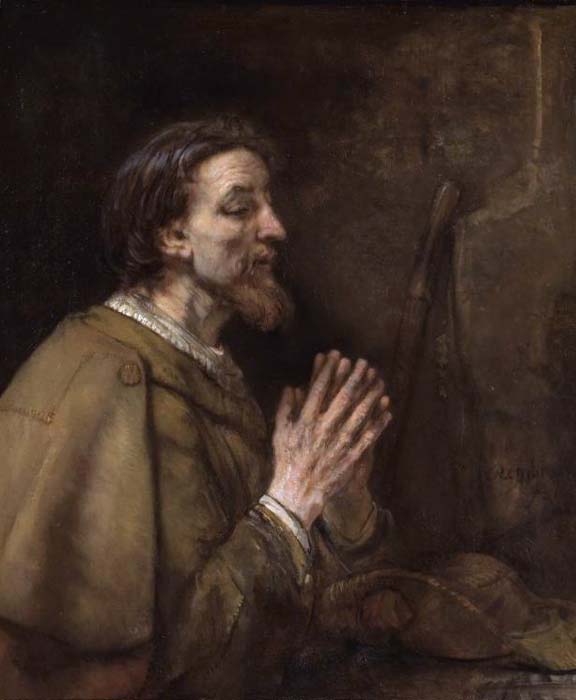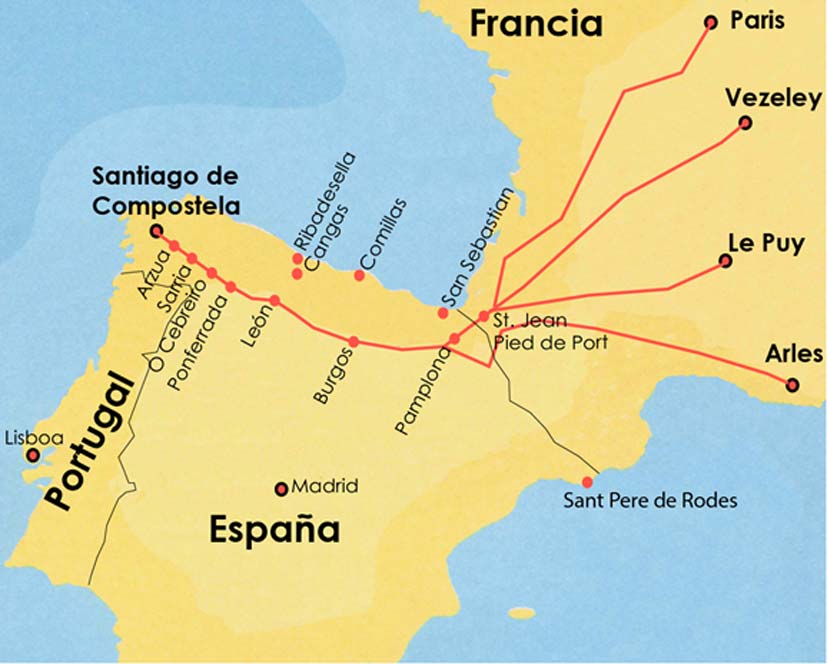
Pilgrims Flock on an Ancient Road to the Ends of the Earth: Mysteries of the Camino de Santiago – Part I
The Spanish poet, Antonio Machado wrote, “Caminante, no hay camino; se hace el camino por andar.”
(Walker/Seeker, there is no path; the path is made by walking.)
Rarely has this been truer than with the Camino de Santiago, the 500-mile-long (800 km) medieval pilgrimage road that stretches across northern Spain from the Pyrenees in the east to Santiago de Compostela, in the province of Galicia, in the northwest. More precisely known as “the French Way,” the Camino ends at Santiago de Compostela—supposed burial place of St James the Greater, the first martyred apostle. He was beheaded in the Holy Land in 44 CE and his body, head, and several disciples were said to have been miraculously transported in a stone boat to northwestern Spain, where, after more miracles, St James (Santiago in Spanish) was buried and eventually forgotten.

Saint James the Elder by Rembrandt He is depicted clothed as a pilgrim; note the scallop shell on his shoulder and his staff and pilgrim's hat beside him. (Public Domain)
Strange Lights Point the Way to a Surprising Discovery
In the early 800s, it is said a hermit (or shepherd) saw lights falling on a distant hillside and rediscovered a long-lost burial. A document, which almost immediately turned to dust, proclaimed the bodies buried there were those of St James the Greater and two disciples. Soon a small chapel was built, and then a cathedral, to house the skeletal relics of the saint.

Cathedral at night. (Yearofthedragon/CC BY-SA 3.0)
By the 11th century, a number of routes had been developed that brought pilgrims from all over Europe and Britain to this distant outpost of Christianity. The most important route, Camino de Santiago was also known as “the French Way” because so many French pilgrims traveled on it. Because of wars, politics, and changing religiosity, by the late 19th century the pilgrimage to Santiago was moribund. Few remembered it and fewer still walked it.





